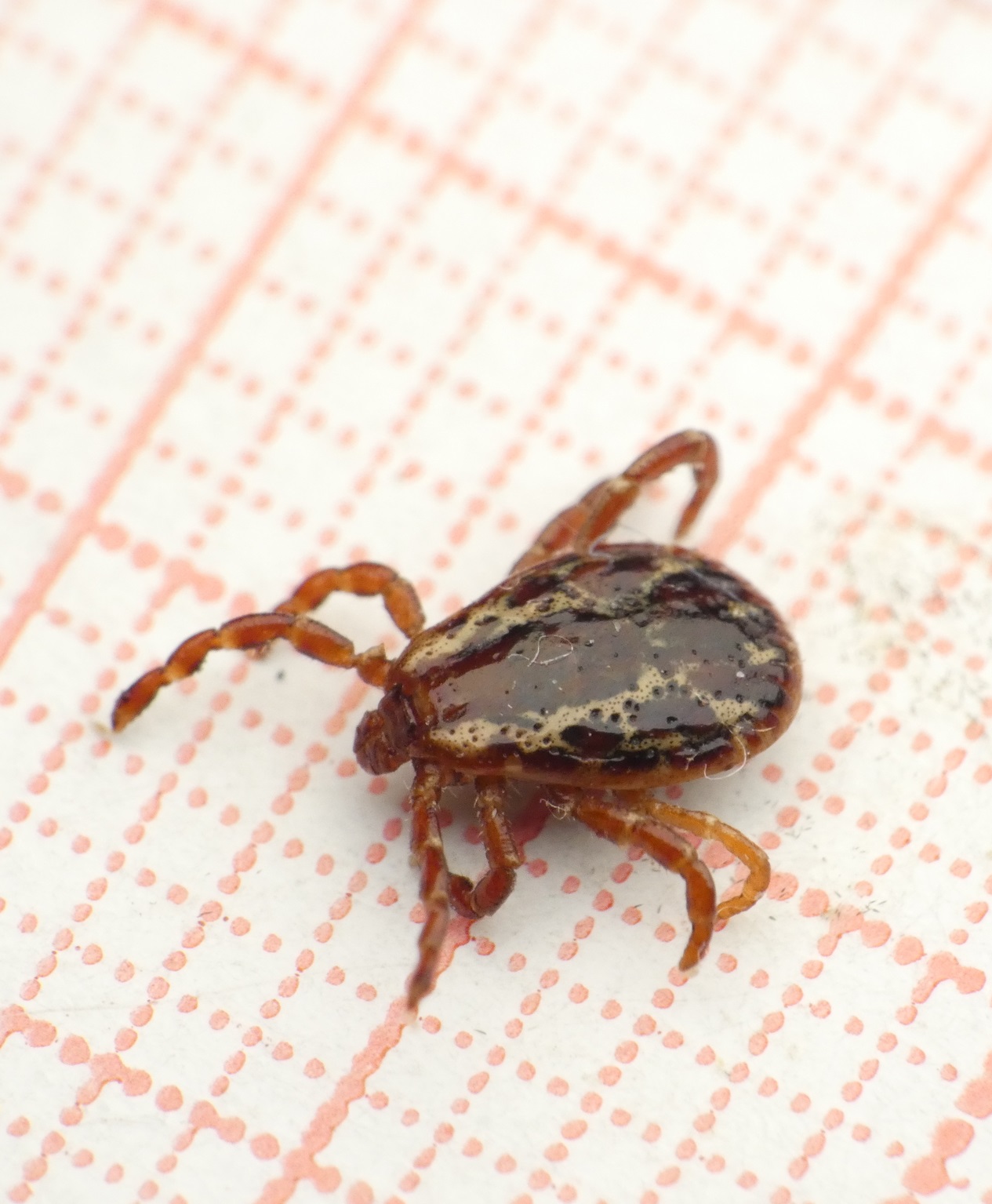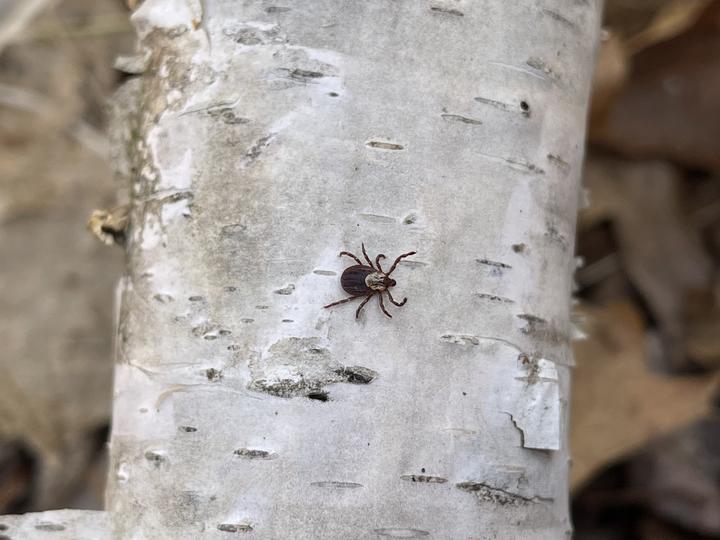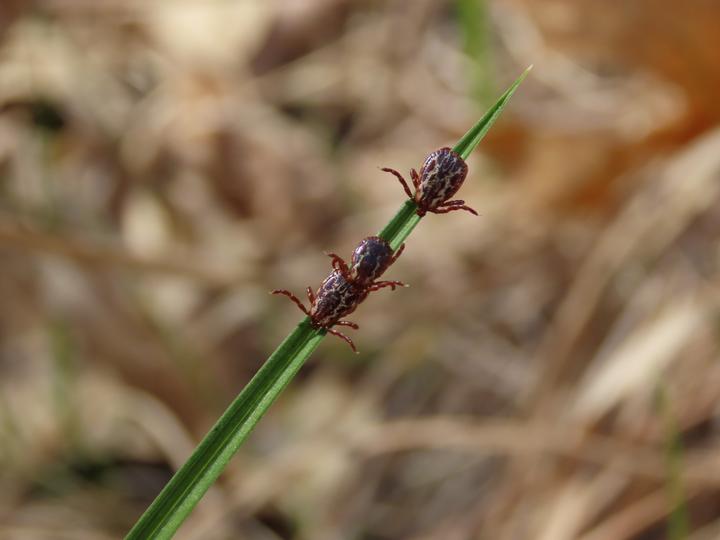More names for this animal
Anishinaabemowin: Ezigaa
The Dakota and Anishinaabe were among the earliest people to name Minnesota’s plants and animals, as well as to understand them in relation to Minnesota’s climate and seasons. Those original names are still in use, and several are included on the Season Watch website. However, complete translations were not available.
Latin (or scientific name): Dermacentor variabilis
The scientific community has a convention of assigning agreed-upon Latin names to every kind of organism. Using scientific names helps people communicate confidently about the same organism and organize lifeforms based on how closely related they are.
More common names: American dog tick
Page contents

June 20, 2021, St. Louis County, Minnesota
Photo © David, some rights reserved (CC-BY-NC-SA)
iNaturalist observation
About the wood tick
- Adult wood ticks have eight legs and are reddish-brown in color. They can be distinguished from other tick species by the lightly colored, geometric designs on their backs.
- They are found in dense woods, grasslands, and areas where they are likely to come in contact with hosts, such as along trails and roadsides.
- Ticks are parasites, meaning they get their nutrients from another organism, often at that organism’s expense. For the wood tick, this means feeding on the blood of mammals including humans, dogs, raccoons, and mice.
- Wood ticks develop through several life stages as eggs, larvae, nymphs, and adults. It typically takes two years to complete their life cycle.
- While wood ticks are not known to transmit Lyme disease, they can spread Rocky Mountain spotted fever, though this is rare. Always make sure you are protecting yourself and your pets with protective clothing, insect repellant, and by treating pets.
Visual guide to phenology
Watch for wood ticks' presence and activity levels at different times of year.
Note to observers
This page explains general clues to watch for when observing wood tick phenology. However, this page does not explain how to identify this animal or collect data in a standardized way.
- For help with identification, see Extension's section on ticks.
- For guidance on collecting data, see Nature’s Notebook.
Graphs and historical data
Note: The Orientation Center provides a map, as well as information on reading graphs; interpreting summary statistics, who collected the data and how; and how to download datasets for independent exploration.
First seen
- Earliest: March 22 (occurred in 2012)
- Average: April 15
- Latest: April 28 (occurred in 2013)

Keep exploring Season Watch
Keep exploring Season Watch
Co-author: Audrey Negro, Minnesota Master Naturalist


